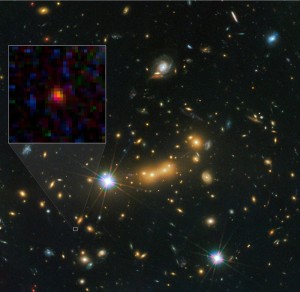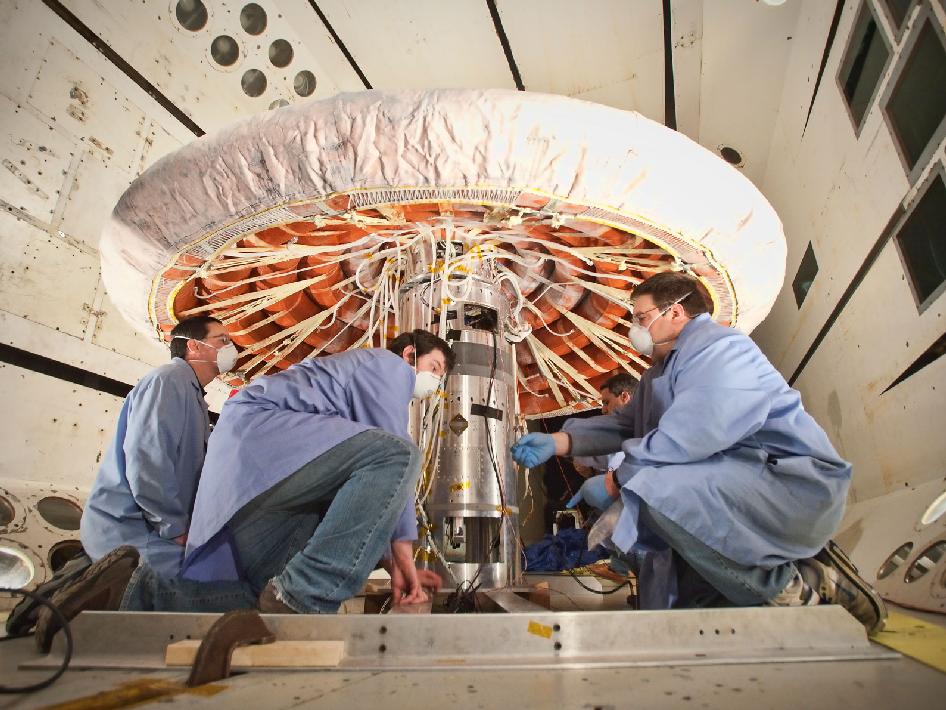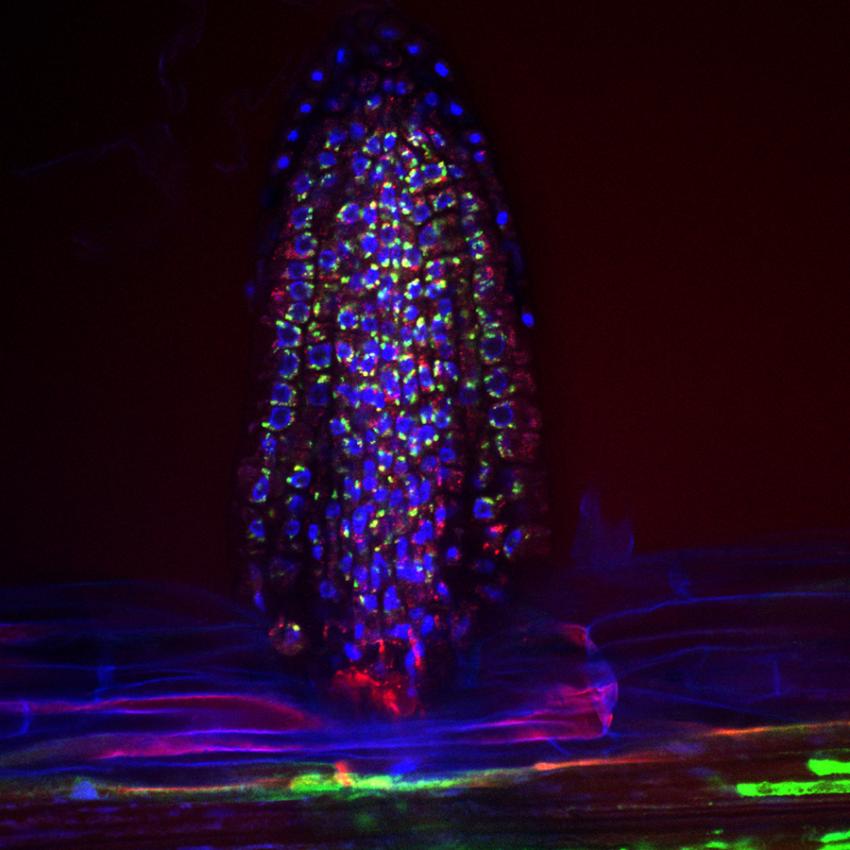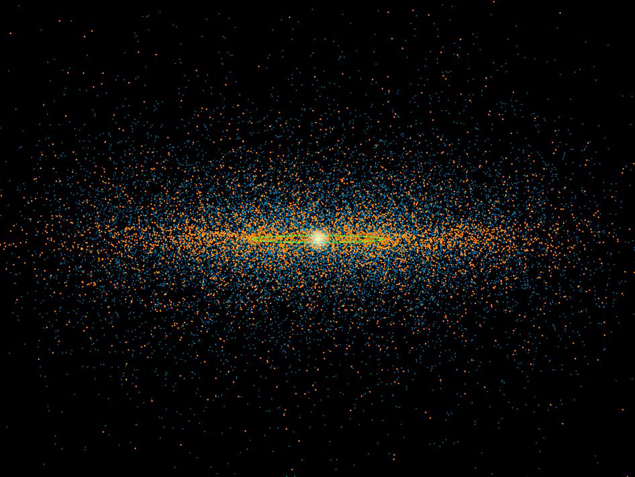
Composite image of the galaxy cluster which helped reveal the newly discovered galaxy – MACS0647-JD. The inset at left shows a close up of the young dwarf galaxy. (NASA)
Scientists have discovered what could be the oldest, most distant galaxy in the universe, thanks to a unique combination of man-made and natural telescopes.
The newly discovered galaxy, MACS0647-JD, was found by the Cluster Lensing And Supernova Survey with Hubble (CLASH).
It is about 13.3 billion light years, or 125,825,000,000,000,000,000,000 km, from Earth. Scientists are getting to see it just as it was 420 million years after the Big Bang, or when the universe was only three percent of its current age of about 13.7 billion years.
Astronomers made the discovery by combining the power of the Hubble Space Telescope, the Spitzer Space Telescope and a natural zoom effect called gravitational lensing, which uses enormous galaxy clusters as interstellar telescopes to magnify distant galaxies behind them.
The effect is achieved when the light rays from the distant object are bent by the gravity of the huge galaxy clusters, just like a giant cosmic lens, that lie between the object and Earth.
“While one occasionally expects to find an extremely distant galaxy using the tremendous power of gravitational lensing, this latest discovery has outstripped even my expectations of what would be possible with the CLASH program,” said Rychard Bouwens of Leiden University in the Netherlands, a co-author of the study that outlined the discovery. “The science output in this regard has been incredible.”
The massive galaxy cluster that’s making the distant galaxy appear brighter than it normally would, providing the natural boost to the Hubble and Spitzer telescopes, , is called MACS J0647.7+7015 and is about five billion light years away.
Because of the gravitational lensing provided by the cluster, the CLASH team was able to observe three magnified images of MACS0647-JD with the Hubble.
“This cluster does what no man-made telescope can do,” said Marc Postman of the Space Telescope Science Institute, who leads the CLASH team. “Without the magnification, it would require a Herculean effort to observe this galaxy.”
The astronomers say that the distant galaxy is so small, about 600 light years across according to their observations that it may be going through its first stages formation. Our own Milky Way galaxy is about 150,000 light years across.
“This object may be one of many building blocks of a galaxy,” says Dan Coe from the Space Telescope Institute and lead author of the study. “Over the next 13 billion years, it may have dozens, hundreds, or even thousands of merging events with other galaxies and galaxy fragments.”
The galaxy could turn out to be too far away for astronomers to confirm its distance with any of the current available technology. But once the new James Webb Space Telescope launches in 2018, astronomers expect to be able to take a definitive measurement of its distance and to study the properties of the galaxy in more detail.
MACS0647-JD, is very young and only a tiny fraction of the size of our Milky Way. The object is observed 420 million years after the big bang. (Video: NASA, ESA, and G. Bacon (STScI))

















 Science World is VOA’s on-air and online magazine covering science, health, technology and the environment.
Science World is VOA’s on-air and online magazine covering science, health, technology and the environment.